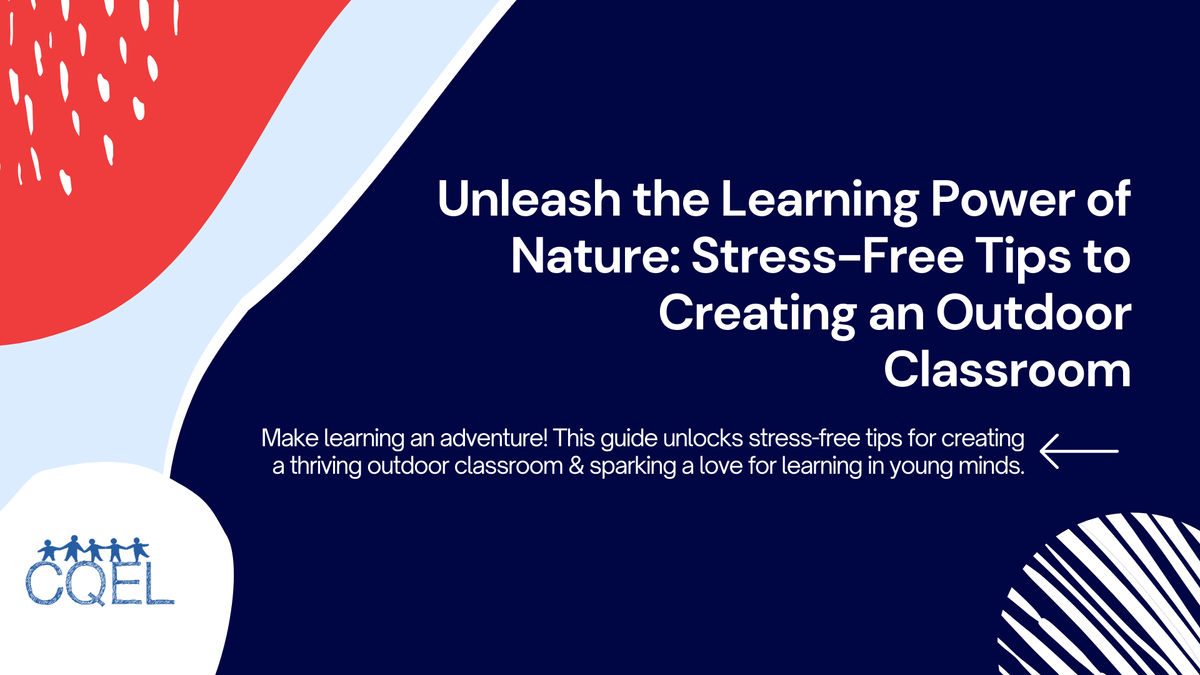Unleash the Learning Power of Nature: Stress-Free Tips to Creating an Outdoor Classroom
Make learning an adventure! This guide unlocks stress-free tips for creating a thriving outdoor classroom & sparking a love for learning in young minds.

As a childcare director in California, cultivating a love for learning in young minds is paramount. One innovative approach gaining traction is the creation of an outdoor classroom. While the potential benefits are vast, the thought of setting up and managing an outdoor space might seem daunting. Fear not! This guide will equip you with stress-free strategies to transform your outdoor space into a vibrant learning environment.
Planning Makes Perfect: Assess Your Space and Resources
The first step towards a stress-free outdoor classroom is meticulous planning. Conduct a thorough assessment of your existing outdoor space. Consider factors like sun exposure, shade availability, and safety hazards. Inventory any existing equipment, such as play structures or sandbox areas. Next, establish a budget and explore resourceful ways to acquire additional materials. Grants, fundraising initiatives, or even parent-teacher collaborations can ease the financial burden.
Safety First: Establishing Clear Boundaries and Supervision
The safety of children is the top priority. Clearly define the boundaries of your outdoor classroom with child-safe fencing or natural barriers. Ensure the space is free of trip hazards and potential dangers like exposed wires or poisonous plants. Develop a supervision plan that adheres to California's child care licensing regulations regarding adult-to-child ratios in outdoor environments. Consider rotating teachers for outdoor supervision to maintain focus and engagement with the children.
Embrace Nature's Playground: Utilizing Loose Parts and Natural Materials
Nature itself offers a wealth of learning opportunities. Instead of investing in expensive equipment, focus on providing loose parts and natural materials. Loose parts, such as logs, stones, and pinecones, can spark imaginative play and encourage problem-solving skills. Plant an edible garden where children can learn about plant life cycles and the importance of healthy eating. Create a sensory path using sand, gravel, and different textures to stimulate young minds and bodies.
Alignment with Curriculum and Learning Objectives
An outdoor classroom shouldn't be an isolated entity. Strive to align your outdoor activities with your existing curriculum and learning objectives. Use the natural environment to teach science concepts, explore mathematical patterns in nature, or practice literacy skills through storytelling under the trees. The California Department of Education's website ([invalid URL child development ON CA.gov cde.ca.gov]) offers a wealth of resources on integrating outdoor learning into early childhood education programs.
Building a Collaborative Spirit: Engaging Parents and the Community
Creating a successful outdoor classroom isn't a solo endeavor. Engage parents by soliciting feedback and involving them in the planning and development process. Organize volunteer days to build raised garden beds, create nature art installations, or maintain the outdoor space. Consider collaborating with local community organizations or environmental groups who might offer resources or expertise.
By following these stress-free strategies, you can transform your outdoor space into a vibrant learning environment. Remember, creating an outdoor classroom is a journey, not a destination. Embrace the process, involve your community, and witness the joy of young children learning and exploring amidst the wonders of nature.
